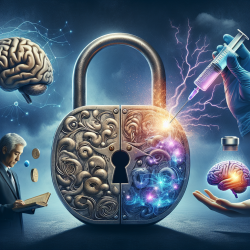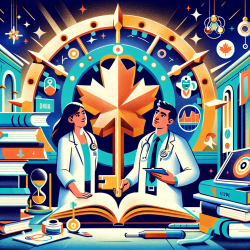Introduction
Aphasia, a common and debilitating condition following a stroke, often leaves patients with significant language deficits. Traditional speech-language therapy (SLT) has been the cornerstone of treatment but offers only modest benefits in chronic stages. This limitation has spurred interest in novel biological interventions that directly manipulate brain function. This blog explores the outcomes of recent research on biological interventions in chronic aphasia, providing insights for practitioners seeking to enhance their therapeutic skills or delve deeper into this promising field.
Understanding Biological Interventions
Biological interventions aim to improve language function by directly influencing brain activity rather than solely relying on compensatory strategies. The research article "A Review of Biological Interventions in Chronic Aphasia" highlights several promising approaches:
- Transcranial Magnetic Stimulation (TMS): This non-invasive technique uses magnetic fields to stimulate nerve cells in the brain. Studies suggest that TMS can enhance language recovery by modulating interhemispheric inhibition, potentially leading to more durable improvements in language function.
- Transcranial Direct Current Stimulation (tDCS): tDCS involves applying a low electrical current to the scalp to modulate neural activity. It has shown promise in enhancing the effects of SLT, with studies indicating improvements in naming and language production tasks.
- Pharmacotherapy: While no pharmacological treatment for aphasia is currently approved, drugs like memantine and vasopressin show potential. These medications may enhance neuroplasticity and improve language outcomes when combined with SLT.
Encouraging Further Research
The evidence base for these interventions remains limited, with most studies in nascent phases and restricted to experimental trials. However, the potential for improving language function and quality of life for those with chronic aphasia is significant. Practitioners are encouraged to stay informed about ongoing research and consider participating in clinical trials to contribute to the growing body of evidence.
Integrating Biological Interventions with SLT
One critical takeaway from the research is the importance of integrating biological interventions with traditional SLT. Combining these approaches can leverage experience-dependent plasticity, potentially yielding the most beneficial and durable outcomes. Practitioners should consider how these interventions might complement their existing therapeutic strategies and discuss potential options with their clients and medical collaborators.
Conclusion
As the field of biological interventions for chronic aphasia continues to evolve, practitioners have an exciting opportunity to enhance their therapeutic repertoire. By staying informed about the latest research and considering innovative approaches, they can play a pivotal role in improving outcomes for individuals with chronic aphasia.
To read the original research paper, please follow this link: A Review of Biological Interventions in Chronic Aphasia.










